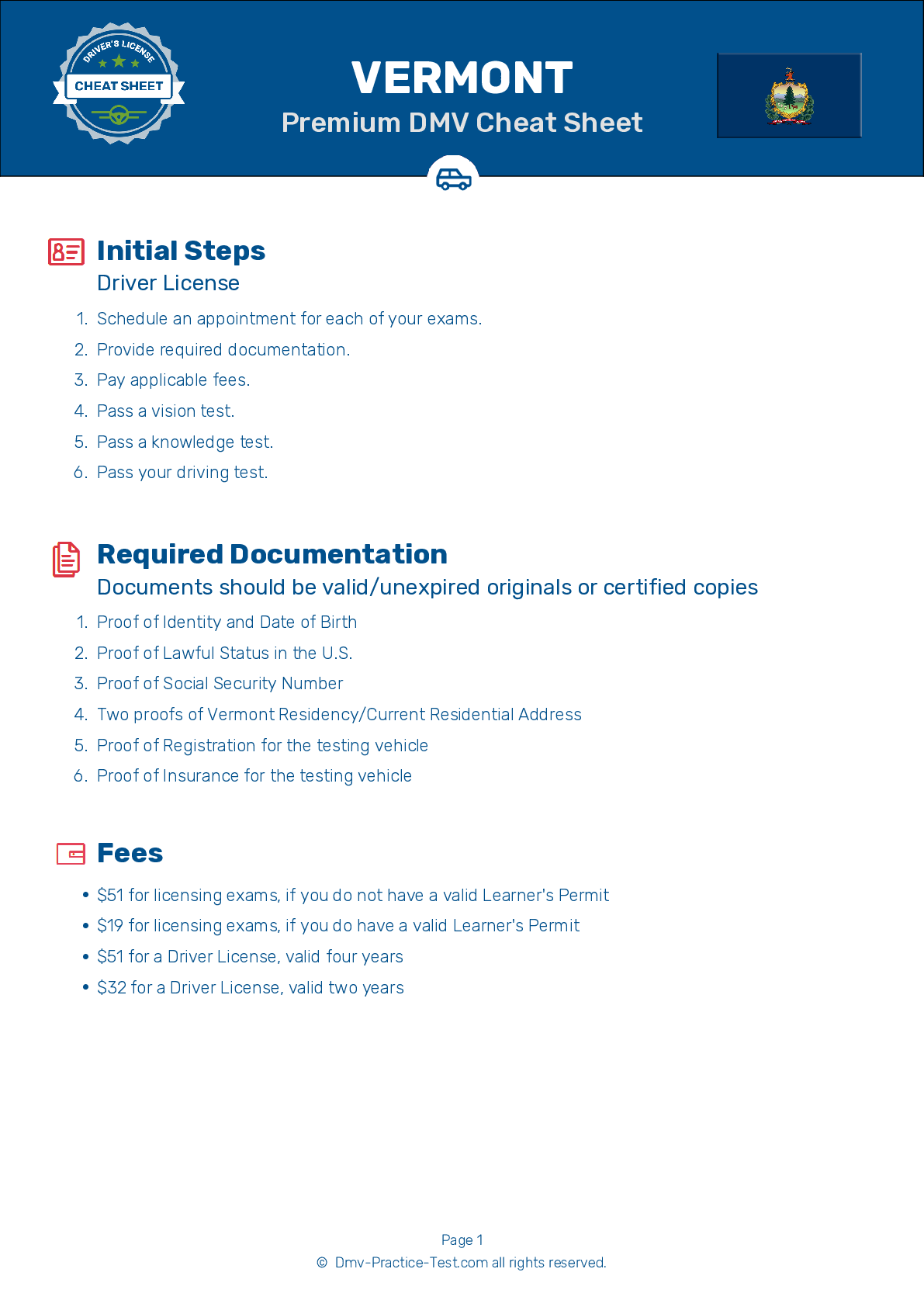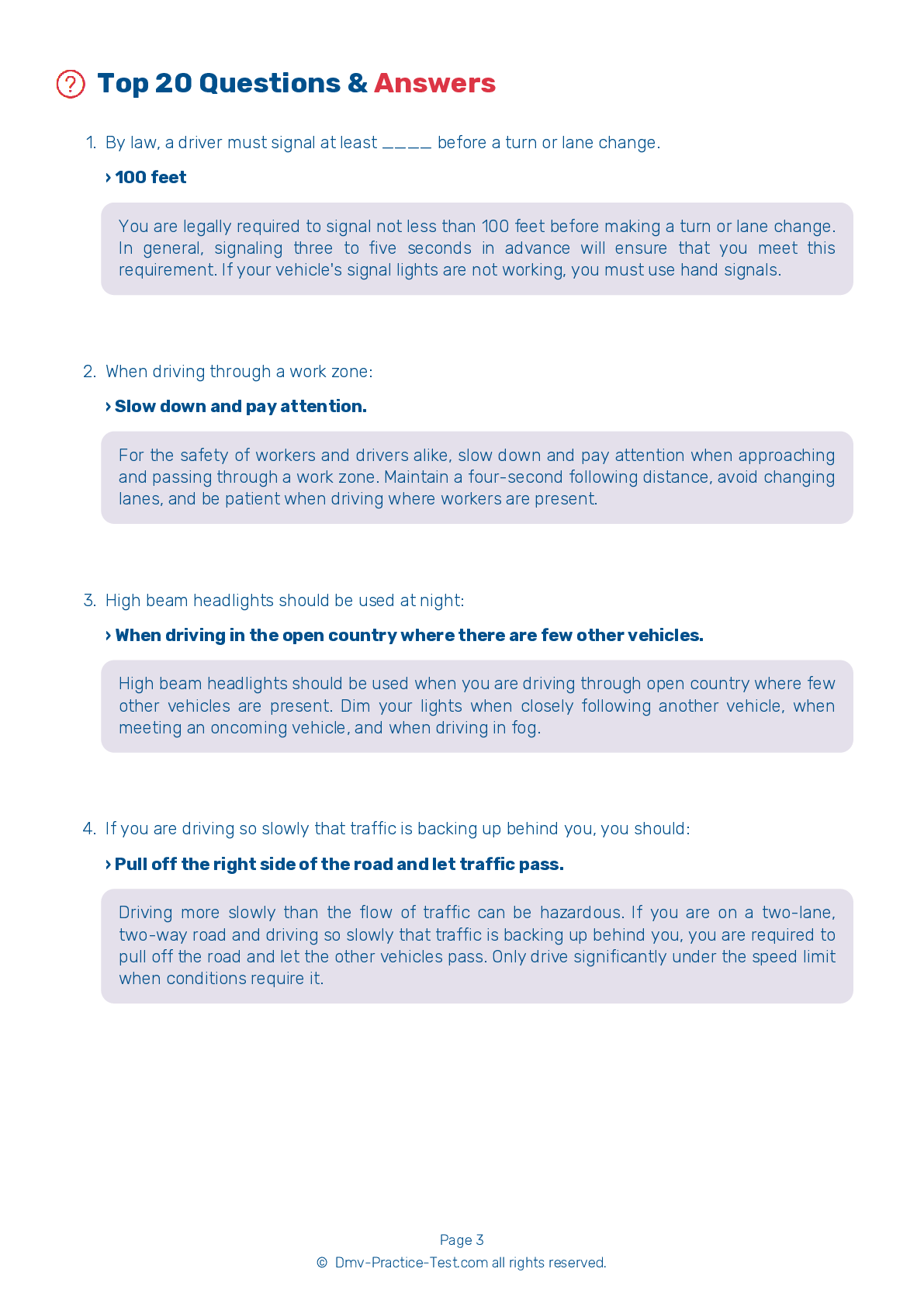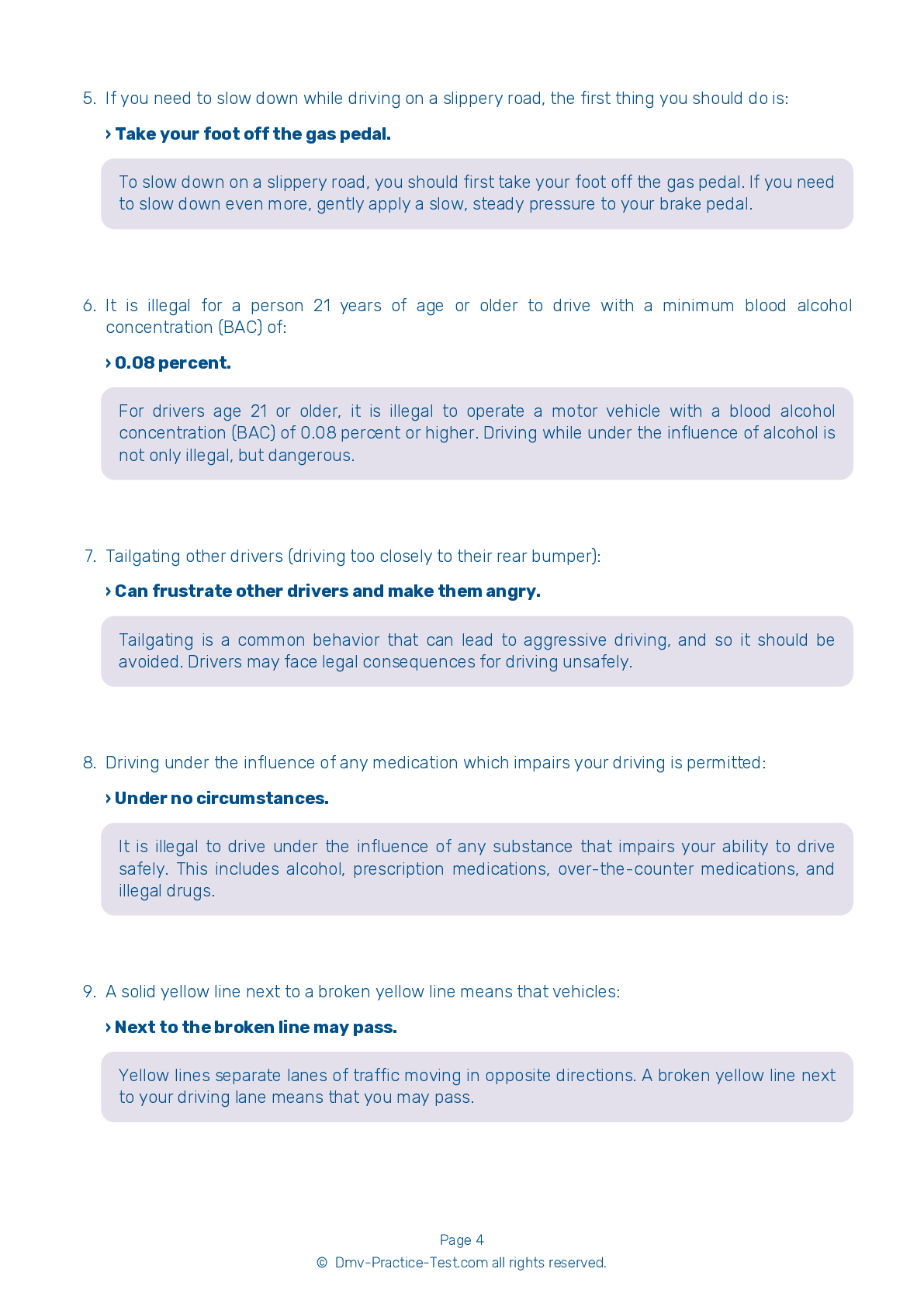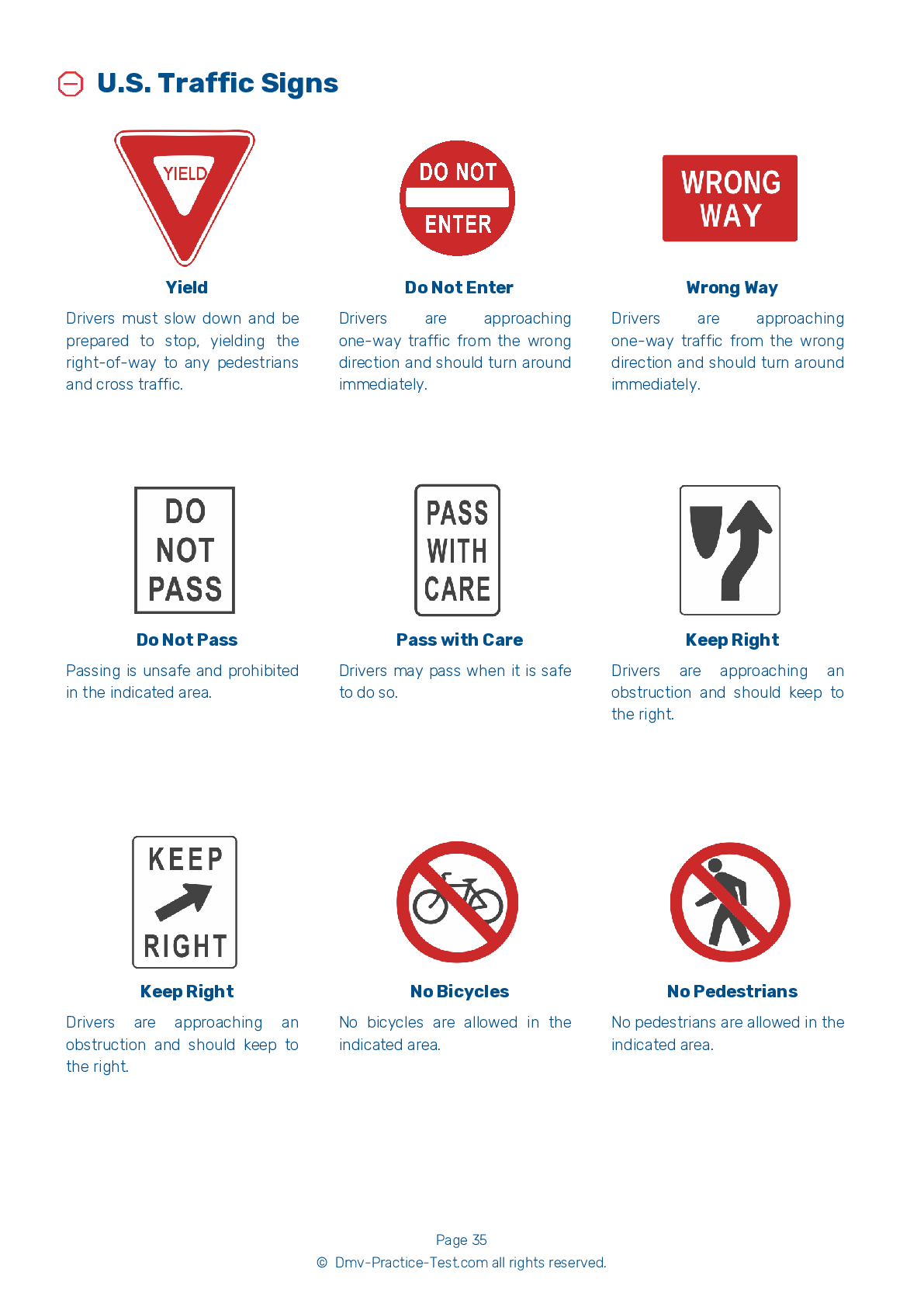FREE Vermont DMV Practice Test #16 Page 2 of 3
The Vermont DMV practise examinations have been updated for January 2025. It includes questions based on the Vermont Driver Handbook's most significant traffic signals and legislation for 2025. Use actual questions that are very similar (often identical!) to the DMV driving permit test and driver's licence exam to study for the DMV driving permit test and driver's licence exam.
On the practise exam, each question gets a tip and explanation to help you remember the concepts. The written component of the official Vermont DMV test will include questions about traffic rules, traffic signs, and driving statutes, as well as knowledge from the Driver Handbook.
To obtain a passing grade, you must correctly answer 16 of the 20 questions. Use the practise exam provided by the Vermont Department of Motor Vehicles to help you prepare for your instruction permit or driver's licence.
The DMV exam is available in several languages.
Using any kind of testing assistance will result in an automatic fail, and the DMV may take additional action against your driver's licence, so stay away from it.
7 . A person who drives much slower than the speed limit:
Driving more slowly than the flow of traffic can be hazardous. If you are on a two-lane, two-way road and driving so slowly that traffic is backing up behind you, you are required to pull off the road and let the other vehicles pass. Only drive significantly under the speed limit when conditions require it.
8 . Which of the following is true regarding seat belts and child restraints in vehicles?
Before you drive, always fasten your seat belt and make sure all your passengers are using seat belts or child restraints. Studies have shown that if you use seat belts, your chances of being hurt or killed in a traffic crash are greatly reduced. Children age 12 and under should always ride properly restrained in a rear seat. Never put a rear-facing infant restraint in the front seat of a vehicle with a front passenger airbag.
9 . What should you be most concerned about when you see this sign?
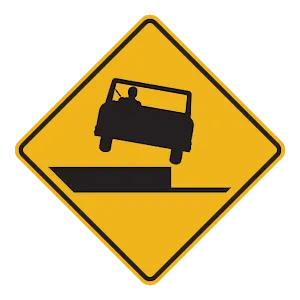
This sign indicates that the shoulder is lower than the road in the area ahead. If you drift off of the roadway and one wheel drops onto a low shoulder, do not slam on the brakes or steer sharply to try to get back onto the roadway. This could easily cause you to lose control of your vehicle.
10 . When driving in fog:
You should use low beam headlights when driving in fog, rain, or snow.
11 . The effect that lack of sleep has on your safe driving ability is the same as:
Fatigue and being under the influence of alcohol have similar effects on your ability to drive safely. For example, being awake for 18 hours impairs your driving about as much as a blood alcohol level of 0.05 percent. Being awake for 24 hours in a row has the same effect on your driving as a blood alcohol level of 0.10 percent.
12 . You may not park:
There are a number of locations where it is unlawful to park, including on a crosswalk or in a marked bicycle lane. When parking on the street, you must be within 12 inches of the side of the road.
13 . Which of the following best ensures your safety and the safety of those around you when you are backing your vehicle?
Backing requires extra caution because it is difficult for drivers to see behind their vehicles. Before entering a vehicle to back up, walk to the back of the vehicle to check for children and small objects.
Need Car Insurance? No problem!
Compare the best rates in Vermont and find a personalized policy that meets your needs.
1. Are You Currently insured ?
2. Married ?
3. Do you own your Home?
4. Do you have more than 1 car ?
5. Have you or a Family Member Honorably Served in U.S. Military ?
6. Your Name
7. Age
8. Zip code
IMPORTANT REMINDER:Auto Insurance is Mandatory to drive in Vermont. Get covered before you hit the road to avoid any fines.
Ranked by best match
2025 Vermont | Frequently Asked Questions
1. Not checking mirrors and blind spots before changing lanes or turning.
2. Speeding or driving too slowly for the conditions or posted speed limit.
3. Not coming to a complete stop at stop signs or red lights.
4. Incorrect signalling or not signalling at all.
5. Poor parking, especially parallel parking.
Remember, practice makes perfect, so take time to hone your skills.
